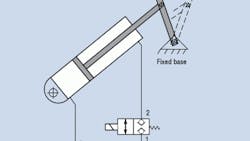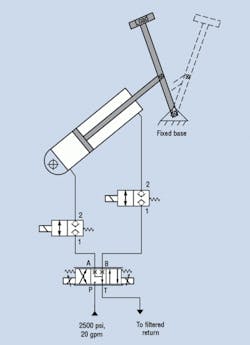Troubleshooting Challenge: Locking valves cause pole in circus act to drift
The pole is hydraulically driven by a cylinder hidden under a false wood shed. The cylinder has a blocking valve on each of its ports and is driven with a proportional valve, as seen in the circuit.
When the pole stops the first time, the locking valves stop all movement. When the proportional valve stops it again after the 10 ft of slow movement, the locking valves should engage and stop all movement. However, the pole continues to drift down slowly until the cylinder bottoms out extending.
The cylinder was inspected and deemed to be in like-new shape as were the locking valves. So why does the pole drift in slow mode but not when it is stopped in fast mode?
Robert J. Sheaf Jr., is founder and president of CFC Industrial Training, a Div. of CFC Solar, which provides technical training, consulting, and field services to any industry using fluid power technology. Visit www.cfc-solar.com for more information.
Solution to problem
On the circus act where the clown rode the top of a 60 ft pole that drifted after the slow mode was told to stop, the locking valves were causing the problem. The circuit symbol shown in the schematic showed a spring returning the valve to the closed-and-locked position and a solenoid would force it open. The valves were rated for a 30 gpm flow at a 140 psi pressure drop.The manufacturer was consulted and they provided modified valves with stronger springs that did not require any pilot pressure to help shift and hold the valve closed.
About the Author

Leaders relevant to this article:

